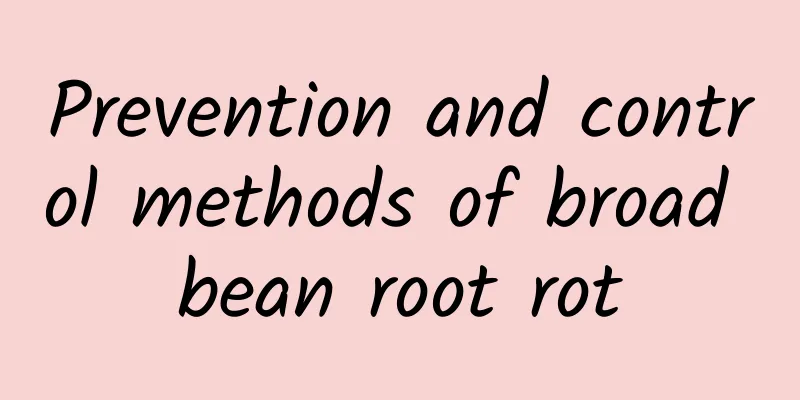Prevention and control methods of broad bean root rot

|
When we grow broad beans, we may often encounter broad bean root rot, so today I will tell you how to prevent and treat broad bean root rot. symptom:The affected plants initially develop water-soaked spots on the main roots and base of the stems, which then turn black and rot. The lateral roots dry up and the cortex easily falls off. There is a dense layer of white snow on the surface of the rotten roots, which is the mycelium of the pathogen. There are also black particles resembling rat feces, which are the sclerotia of the pathogen. In the later stage, the moisture in the diseased stems evaporates, the diseased part dries up and turns grayish white, the epidermis cracks like hemp threads, and sometimes there are black particles like rat feces inside. Popular rules:The pathogen can survive or be transmitted on seeds, with a seed-carrying rate of 1.2% to 14.2%, and is mainly transmitted on the seed surface through the seed coat. In addition, the pathogen that overwinters in the soil with mycelium and thick-walled spores along with diseased remains can become the primary source of infection the following year. The severity of the disease is related to soil moisture content. When the groundwater level is high or the field is waterlogged, the disease is most severe when the field water holding capacity is higher than 92%, and the disease is less severe in fields with high terrain; the disease is less severe in fields with intensive farming and in winter when broad beans, wheat, and rapeseed are rotated. The difference between years is related to meteorological conditions. In years with continuous rain during sowing, seedling death is serious. Prevention and treatment methods:(1) Strengthen field management. Water in time during droughts; drain and remove waterlogging in time during rainy seasons; rotate crops properly and do not apply nitrogen fertilizers too much; plant crops at a reasonable density to ensure good ventilation and light transmission in the field, improve the disease resistance of the plants, and reduce diseases. When sowing, cover the seeds with 150 grams of 50% carbendazim per mu mixed with fine soil. (2) Chemical control: Use 1000 times diluted 50% carbendazim to irrigate the roots during the seedling stage, or use 800-1500 times diluted 70% thiophanate, or 600 times diluted 65% mancozeb wettable powder for spraying. |
>>: Key points of broad bean cultivation How to grow broad beans
Recommend
How is Nepal Daily? Nepal Daily Review and Website Information
What is the website of Gorkhapatra? Gorkhapatra is...
The role and efficacy of persimmon
I believe everyone has a certain understanding of...
What is the Belarusian government like? Belarusian government reviews and website information
What is the Belarusian government website? This we...
The efficacy and function of corn mushrooms. Steps of making corn mushrooms.
Corn, mushroom and pork ribs soup. Corn is a coar...
Nutritional value and benefits of watercress
Watercress is an alien species, a green vegetable...
The nutritional value of corn leaves and the effects and functions of corn leaves
Corn leaves are the leaves of the plant corn. Mos...
How to make black fungus porridge
I believe that everyone is not very familiar with...
Why doesn't Clivia bloom? How to solve the problem of Clivia not blooming
Clivia can tolerate shade and has bright green co...
The benefits of eating duck's foot millet
Schefflera chinensis is a kind of Poaceae plant. ...
Benefits of Homemade Honey Grapefruit Tea
When grapefruit is on the market in large quantit...
What is The Sims like? The Sims review and website information
What is The Sims? The Sims is a game launched by t...
How to make King Oyster Mushroom with oyster sauce
King oyster mushroom is a very popular and common...
The efficacy, effects and hazards of cranberry juice
Cranberry is a red berry that tastes sweet and so...
How to make pig lung porridge
The method of making pig lung porridge is actuall...
What foods can promote sleep?
People usually live a fast-paced life and have hi...









